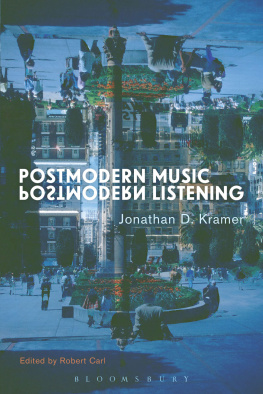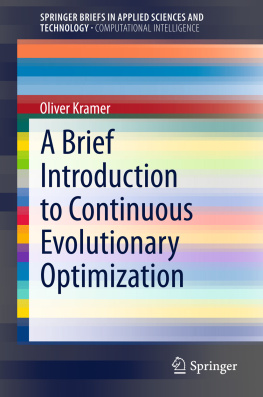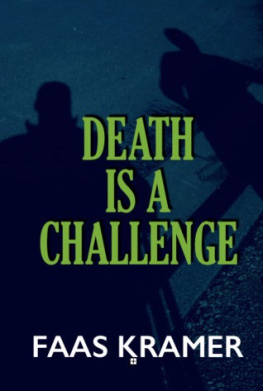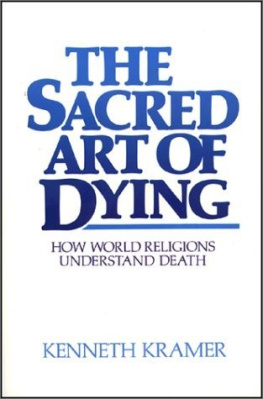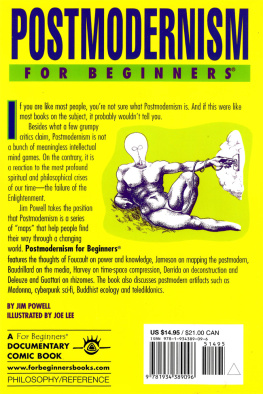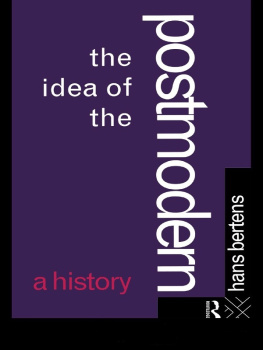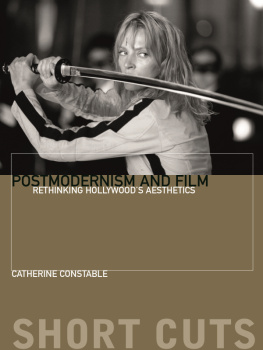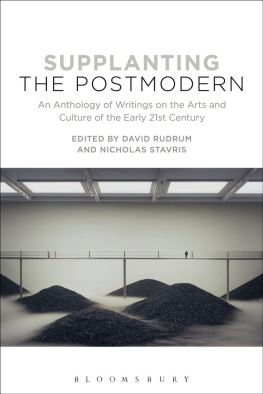Postmodern Music,
Postmodern Listening
Postmodern Music,
Postmodern Listening
By
Jonathan D. Kramer
Edited by
Robert Carl
Bloomsbury Academic
An imprint of Bloomsbury Publishing Inc
Contents
Appendix
The book you are holding has been in limbo for over a decade, and at times it seemed it would never see the light of day. The fact that it is now in your hands is a tribute to the efforts and faith of several people devoted to the author and his ideas, and a story of intellectual rescue that Ill detail below.
Jonathan Kramer was a composer and theorist, and one of the most original thinkers about music of his generation. And I would go so far as to say that his being a composer lent his thinking its particular originality. His work in the 1970s is one of the most clearly articulated syntheses between modernist and minimalist practice, a rarity at the time, and one that bespoke an exceptional openness to new experience. But he also was always drawn to the power of the classic repertoire, something that he saw and heard with unusual freshness. [In fact, he was the program annotator for the Cincinnati Symphony for over a decade, resulting in a collection of those pieces entitled Listen to the Music .]
As a theorist, his magisterial accomplishment was The Time of Music , a book that attempted to understand and categorize the many ways that musical time is conceived and its flow articulated. It was not a treatise on rhythm, even though it treated the topic as part of its agenda; rather, it attempted to see the very medium within which music exists in new terms. As such it raised far more questions than it could answer, but it also laid the groundwork for an entirely new field of study.
Jonathan (as all who knew him called him, and as do most of those who contribute ancillary pieces to this edition, including myself; in the text when that personal contact is evident well call him so; when the consideration is more abstract, it will be Kramer) came to New York in 1988 as Professor of Music Theory at Columbia, and at the turn of the century was at the height of his powers on all fronts. He had seen his musical vision as both composer and writer develop into one that embraced the multiplicity of postmodern thought and art, and he was hard at work on a comprehensive text that sought to explain the technical and philosophic bases of that aesthetic, Postmodern Music, Postmodern Listening. But in 2004, a congenital blood disease made a virulent appearance, and carried him off suddenly and shockingly to all who knew him.
And so his manuscript, without the sort of maintenance and advocacy the author gives towards shepherding it to publication, fell off the radar. Jonathans widow, Deborah Bradley-Kramer, and his friend and colleague, musicologist Jann Pasler, tried to find publishers, but their efforts were rebuffed, for reasons Ill describe later.
It is at this point I come into the picture. Around 2010 my friend, the composer/musicologist/critic Kyle Gann, made an offhand remark to me about Kramers last book, and that he had a copy of the manuscript. I knew Jonathan, having been a former student and remaining a friend over the years, and knew of the project, but was not intimately acquainted with it. I asked Kyle for a copy and he sent it on. As I read it, I was astonished to see that the book was almost complete, not the sort of husk Id expected. Of its eleven chapters, only the tenth seemed about half-finished, and Jonathan himself had annotated that this was the only aspect of the book he considered insufficient. Other editorial issues seemed quite manageable.
I contacted Deborah Bradley-Kramer, who was the owner of the text, in early 2013, and offered my services to once again start the process of finding a publisher and to edit the book, should the search be successful. She gave her blessing, and over the next two years I formulated a proposal, and on a hunch contacted Continuum books, which eventually became Bloomsbury Academic. In late spring 2014 the book finally found a home for publication, and the contracts were signed.
I near the end of my editorial role as I write this, and its important to understand whats been done with the manuscript to reach this level of presentation. First, for an excellent and detailed description of the evolution of the text, and of Kramers ideas, please read Jann Paslers preface. Second, when examining files from Jonathans computer with Deborah, we found a Word version of the text that was even more complete than the one I had worked from earlier. Above all, , dealing with issues of listeners ambiguous perception of common sources. Fortunately, the core example is the Schumann Soldiers March , and John Halle in his essay helpfully has included it, so readers should refer to that point when the citation comes up in Kramers text.
Another (and indeed substantial) aspect of the book that was incomplete was a Book II consisting of analyses of works, both from the repertoire and contemporary. It was clear that Kramer hoped these pieces would augment his more general argument in the body of the text, presenting a detailed model of an analytic method tailored to postmodern concepts and practices. When the later version surfaced, his analysis of the Finale from Mahlers Seventh Symphony was discovered. (Kramer had originally thought to put it in the body of the text, but then decided to make it part of this extended appendix.) Also, he repeatedly referenced his article on the Nielsen Sixth Symphony (already published in The Nielsen Companion (London: Faber and Faber; Portland, OR: Amadeus Press, 1994), and it has been included as well. Other contemporary composers suggested in the table of contents included Bernard Rands Body and Shadow , Steve Reichs Proverb , and unspecified pieces by Louis Andriessen, Aaron Kernis, and John Adams. Of these, only the Rands is available, published in Contemporary Music Review (vol. 20, Part 4, 2001), an issue that I edited. Finally, there is passing mention of a Glossary in the original table of contents. This seems never to have been made, and its unclear if it was designed as a lexicon of musical terms for non-professionals, or of more arcane critical terminology. I personally think the text communicates its intent without needing such.
The earlier mention of Halle brings up the largest addition and expansion to the book, the inclusion of a series of essays commenting on Kramers life and work. Originally I thought of these as a way to create a distinctly multiple answer to the incompleteness of (very much in keeping with the books theme), but with the discovery of the more recent version, the aim changed. It was obvious that Deborah Bradley-Kramer, as the primary interpreter of Jonathans music, should write on it, presenting him as a composer. Jann Pasler, due to her long intellectual interchange with him about the text, was obviously the person to write the Preface. Beyond that, Deborah and I agreed on a set of contributors who had some connection to Jonathan, either as colleagues or students and all, interestingly, composers. But they are composers also noted for the clarity of their thought and writing. This was never intended to be just a memorial wreath, but rather an ongoing dialogue with the issues raised in the text, seen from the perspective of a decade further down the road. And the group of composersof different ages, stylistic stances; peers, colleagues, former students of JonathansI think amply fulfills this mandate. In a brief introduction to the section I detail what I feel are the special strengths and insights of each.

